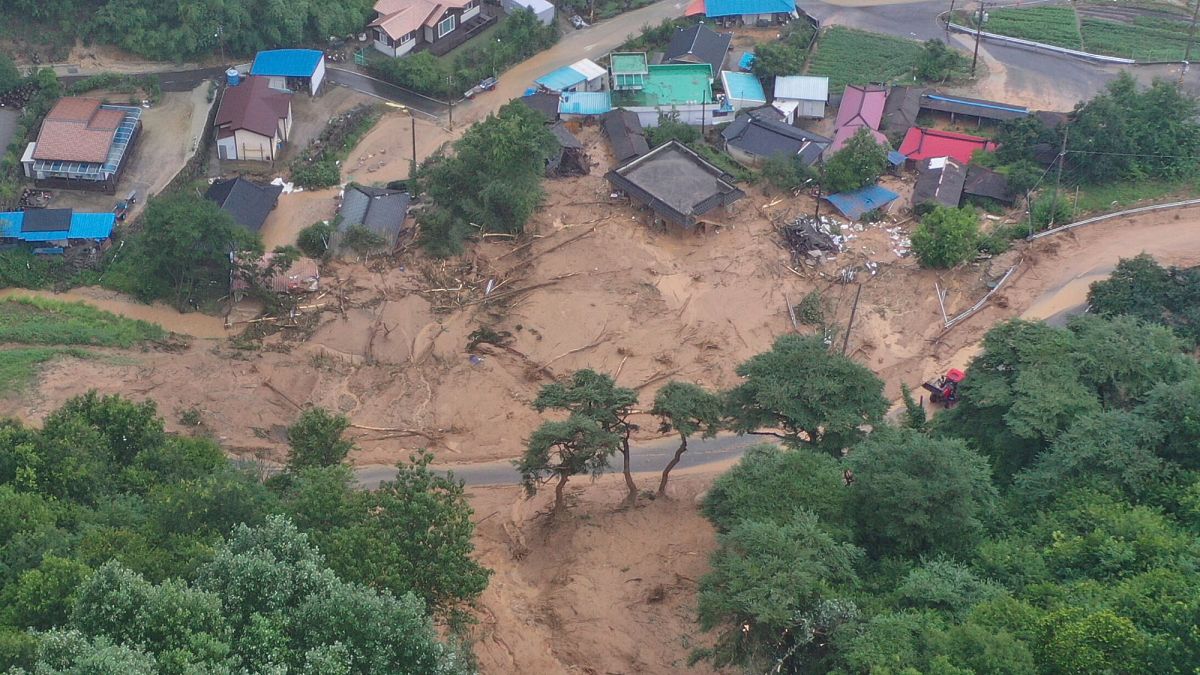South Korea is grappling with the aftermath of relentless torrential rains that have lashed the nation for several consecutive days. With at least 17 confirmed fatalities and numerous individuals reported missing, these storms have triggered one of the worst weather-related crises in the country’s history. The heavy downpours have forced over 5,000 residents into emergency shelters, as flooding has rendered many homes uninhabitable and swept away vital infrastructure. Eyewitness accounts describe
Did You Know
Cows have best friends and can become stressed when separated from them.
?
AD
rivers overflowing, engulfing streets, and leading to devastating landslides that have disrupted communities across various regions.
The chaos has prompted local authorities to initiate widespread evacuation efforts, with emergency services working diligently to reach those trapped amid the increasing deluge. Reports of collapsed buildings and stranded livestock add to the urgency of the situation, as rescuers battle rising waters and treacherous conditions. Streets once bustling with life are now ghostly echoes of their former selves, marked by the scars of destruction left by the relentless rainfall. As the government issues repeated warnings of possible further flooding and landslides, many remain on high alert, fearing the worst is yet to come.
This unprecedented weather event not only raises immediate concerns about safety and recovery but also highlights vital questions surrounding the impact of climate change on South Korea's weather patterns. The increasing intensity and frequency of such extreme weather events urge a renewed focus on preparedness and resilience strategies as the country braves this natural disaster. For many, the hope lies not only in survival but also in a prompt and effective response that will help communities rebuild and recover from the ruin caused by nature's fury.
Q&A (Auto-generated by AI)
What are the causes of torrential rain?
Torrential rain is primarily caused by atmospheric conditions that lead to excessive moisture accumulation. This can occur due to warm, moist air rising and cooling, resulting in condensation and heavy precipitation. Weather systems such as monsoons, tropical storms, or frontal systems can contribute significantly. In South Korea, the summer monsoon season typically brings intense rainfall, exacerbated by geographical features like mountains that enhance rainfall through orographic lift.
How do landslides form during heavy rain?
Landslides occur when the stability of a slope is compromised, often due to heavy rainfall saturating the soil. This saturation reduces friction between soil particles, making it easier for them to slide. In South Korea, the combination of steep terrain and intense, prolonged rain can trigger landslides, especially in areas with loose soil or deforestation. The recent torrential rains have caused significant landslides, leading to fatalities and evacuations.
What regions in South Korea are most affected?
The western and southern regions of South Korea are typically most affected by torrential rains, especially during the monsoon season. Areas like South Chungcheong and Gyeonggi Province have experienced severe flooding and landslides due to their geographical features and urban development. The recent storms have particularly impacted rural communities, where infrastructure may be less resilient to extreme weather events.
What safety measures are taken during floods?
During floods, South Korea employs several safety measures, including issuing early warnings through the national alert system. Authorities often evacuate residents from high-risk areas to shelters. The government also mobilizes emergency services for rescue operations and provides assistance to affected families. Infrastructure improvements, such as better drainage systems and flood barriers, are also part of long-term strategies to mitigate flood damage.
How does climate change impact rainfall patterns?
Climate change is altering rainfall patterns globally, leading to more intense and unpredictable weather events. Increased temperatures can enhance evaporation rates, resulting in heavier downpours in some regions while causing droughts in others. In South Korea, climate change has been linked to more frequent and severe monsoon rains, leading to greater risks of flooding and landslides, as demonstrated by the recent torrential rains that caused significant damage.

:max_bytes(150000):strip_icc():focal(801x304:803x306)/south-korea-flooding-072025-bdc416b87ab54c76be5fe5a87cf4470b.jpg)















